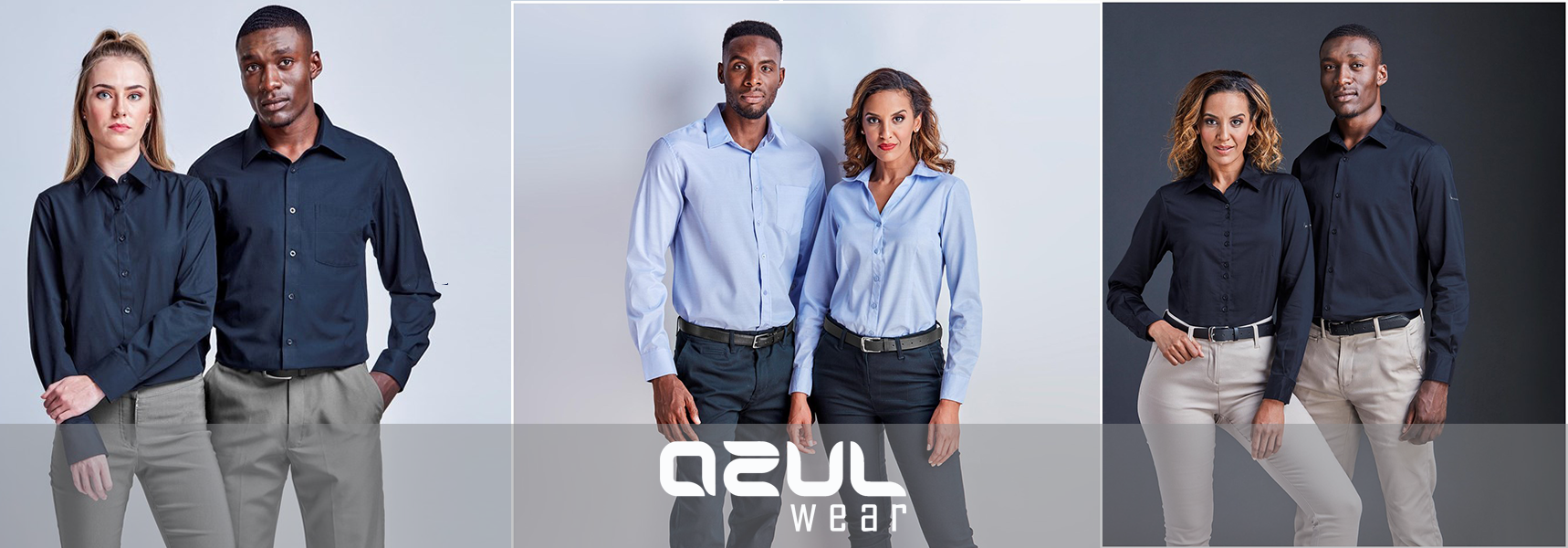How Sustainable Fabric Trends Are Shaping Branded Clothing Collections
How Sustainable Fabric Trends Are Shaping Branded Clothing Collections
Blog Article
The Significance of Sustainable Clothing: Just How It Influences the Atmosphere and Your Storage room
Sustainable clothes is increasingly identified for its critical function in reducing the environmental influence of the fast apparel industry. By concentrating on green products and moral production methods, it deals with pressing eco-friendly issues. This change not just profits the world but likewise affects consumer options, leading to a much more thoughtful approach to closet administration. Recognizing these characteristics increases vital concerns regarding style's future and individual duty in forming it.
The Ecological Footprint of Rapid Style

Advantages of Lasting Materials
Lasting products provide substantial benefits, particularly with environmentally friendly material selections that decrease ecological damage. These products additionally demonstrate durability and longevity, reducing the demand for constant substitutes. Therefore, they add to a much more lasting style sector and advertise accountable customer habits.
Eco-Friendly Fabric Selections
While the fashion business has long been connected with fast patterns and environmental damage, the increase of environment-friendly textile selections provides a transformative chance. Lasting products such as organic cotton, hemp, and Tencel have obtained popularity because of their reduced environmental effect. These fabrics are frequently generated without dangerous pesticides and need less water, minimizing their carbon impact - Branded Clothing. In addition, lots of environment-friendly fabrics are naturally degradable, adding to a round economic climate by reducing waste. Selecting sustainable products not just supports eco accountable methods but likewise advertises healthier communities. As customers become more mindful of their buying power, the need for environmentally friendly materials urges brand names to introduce and embrace more sustainable manufacturing techniques, eventually benefiting the earth and future generations
Sturdiness and Longevity Advantages
Many customers are increasingly acknowledging the resilience and durability advantages of lasting products in their clothes choices. Unlike traditional fabrics, lasting products such as natural cotton, hemp, and recycled polyester are engineered to hold up against deterioration, causing garments that last longer. This reduced frequency of substitute not only conserves consumers cash in time however likewise diminishes waste produced by rapid fashion. Additionally, sustainable apparel typically employs eco-friendly production methods that enhance textile toughness, adding to a decrease in the overall carbon impact. By buying resilient clothes, consumers can cultivate a more lasting closet while appreciating high-grade items that preserve their aesthetic and functionality over time. Subsequently, resilience and long life stand as essential benefits of choosing sustainable products.
Decreasing Waste Through Lasting Practices
Decreasing waste in the garment industry can be accomplished with cutting-edge practices such as upcycling and repurposing materials. In addition, embracing minimal wardrobe methods encourages consumers to prioritize top quality over quantity, inevitably decreasing apparel usage. Together, these strategies contribute significantly to a much more lasting clothes design.
Upcycling and Repurposing Products
Upcycling and repurposing products have actually arised as ingenious methods in the style industry, transforming disposed of textiles into valuable brand-new items. This technique not only minimizes waste however additionally encourages creativity and uniqueness in apparel style. By taking old garments and materials, designers can create unique pieces that show personal style while lowering the demand for brand-new sources. Additionally, upcycling usually needs less power and water contrasted to conventional production procedures, greatly decreasing the environmental footprint of fashion. As consumers end up being a lot more familiar with sustainability, the popularity of upcycled clothing remains to increase, promoting a circular economy. Ultimately, these practices contribute to a much more lasting future, where style focuses on ecological wellness over rapid manufacturing and usage.

Minimal Wardrobe Methods
As individuals progressively seek to lessen their ecological effect, adopting minimalist closet techniques has actually gotten grip as a reliable method to lasting fashion. These approaches emphasize top quality over quantity, encouraging great post to read consumers to curate a smaller sized collection of functional, durable clothing. By concentrating on ageless items that can be mixed and matched, individuals can lower the frequency of acquisitions and eventually decrease waste.Additionally, minimalism advertises mindful intake, urging shoppers to review the honest and ecological implications of their selections. This strategy not only fosters a much more sustainable way of life yet also simplifies daily decision-making concerning clothing. As people accept minimal concepts, they add to a style culture that values sustainability and responsible consumerism, eventually resulting in an extra eco-conscious society.
The Duty of Moral Labor in Lasting Style
While lots of consumers are increasingly familiar with the environmental consequences of their apparel options, the relevance of honest labor methods in sustainable fashion can not be ignored. Moral labor incorporates fair earnings, risk-free working conditions, and respect for workers' rights, forming the foundation of liable fashion manufacturing. Brands that prioritize moral labor not just uplift communities but likewise set a standard for accountability in the industry.Moreover, the assimilation of ethical methods fosters transparency, making it possible for consumers to make educated options concerning their acquisitions. This technique contrasts dramatically with quick style's unscrupulous labor designs, which usually focus on profit over people. By sustaining firms dedicated to ethical labor, consumers add to a system that values human self-respect along with ecological sustainability. Moral labor is not merely an add-on; it is necessary to the wider goal of lasting style, making certain that the quest for eco-friendliness does not come at the expense of human civil liberties.
The Impact of Sustainable Garments on Carbon Emissions
Lasting clothes has the possible to greatly reduce carbon emissions connected with the fashion business. Traditional garment production contributes significantly to greenhouse gas exhausts, largely as a result of energy-intensive production procedures and making check my reference use of non-renewable sources. In contrast, sustainable fashion concentrates on environment-friendly products, such as natural cotton or recycled fibers, which frequently call for much less power to produce.Moreover, sustainable brand names tend to embrace extra efficient manufacturing techniques, decreasing waste and reducing general emissions. By focusing on durability and classic style, sustainable apparel urges consumers to purchase much less often, further lowering the carbon impact connected with overconsumption.Additionally, numerous lasting brand names are dedicated to openness in their supply chains, allowing consumers to make enlightened choices that align with their values. Ultimately, moving towards sustainable clothes can cause a significant decrease in carbon exhausts, adding to a much healthier earth and an extra lasting future for the fashion business.
Supporting Local Economies With Lasting Options
The change towards lasting apparel not only addresses environmental concerns but likewise substantially advantages neighborhood economic situations. By choosing sustainable style, customers typically support little organizations and neighborhood artisans, improving area resilience. These enterprises normally operate on a smaller scale, prioritizing workmanship and ethical methods over mass production.Investing in locally made sustainable apparel promotes job production and boosts economic development within neighborhoods. As consumers come to be extra mindful of the environmental effect of their acquisitions, they significantly seek items that mirror their worths. This need urges neighborhood suppliers to embrace lasting techniques, adding to a round economy.Moreover, sustaining local organizations lowers transport emissions, lining up with eco-conscious consumer behavior. The interconnectedness of lasting apparel and neighborhood economies underscores the essential duty that individual choices play in promoting both environmental and economic health and wellness. By cultivating these neighborhood connections, communities can prosper check my blog while additionally working in the direction of an extra lasting future.
Changing Your Closet: Tips for a Sustainable Closet
As individuals look for to decrease their ecological effect, transforming a closet into a lasting closet becomes a crucial action. One effective approach is to evaluate existing garments, keeping just products that are used regularly and that align with sustainability goals. Prioritizing quality over amount is crucial; spending in long lasting items from green brands can significantly minimize waste.Additionally, including second-hand items can take a breath brand-new life into a closet while decreasing environmental damage. Organizing garments swaps with close friends or giving away extra items can even more advertise sustainability.When buying, individuals need to seek products that are natural, recycled, or biodegradable, and avoid quick fashion retailers - Branded Clothing. Practicing conscious consumption by attentively considering each purchase can contribute to a much more sustainable way of living. By applying these pointers, one can develop a closet that reflects personal design while sustaining environmental stewardship
Frequently Asked Concerns
Exactly How Can I Identify Sustainable Apparel Brands?
To identify lasting clothing brand names, one need to look into materials made use of, check for accreditations like Fair Trade, and take a look at the brand name's transparency concerning their manufacturing procedures, labor methods, and environmental impact, making certain environmentally friendly and honest techniques are focused on.
What Are the Prices Connected With Lasting Style?
The expenses associated with lasting style can vary considerably. Greater manufacturing costs, ethical sourcing, and environment-friendly materials typically lead to increased retail costs, which may discourage some customers while interesting environmentally aware consumers.
Can Sustainable Garments Be Elegant and Trendy?
Lasting clothing can certainly be fashionable and stylish. Designers increasingly focus on innovative products and honest manufacturing approaches, verifying that fashion and sustainability can exist side-by-side. Customers now have varied choices that mix aesthetic appeals with environmental awareness.
Just How Does Laundering Clothing Affect Their Sustainability?
Washing clothing substantially influences sustainability by consuming water and energy, adding to pollution, and triggering microplastic launch. Frequent cleaning can degrade materials, reducing their life-span and enhancing the requirement for substitutes, ultimately worsening ecological concerns.
What Is the Lifespan of Lasting Apparel Contrasted to Rapid Fashion?
The life expectancy of sustainable clothing commonly goes beyond that of fast fashion things, usually long-term several years due to top quality products and workmanship. On the other hand, fast style garments may break down quickly, necessitating even more regular substitutes. Sustainable clothing is increasingly identified for its vital role in minimizing the environmental effect of the quick fashion sector. While several customers are significantly mindful of the environmental effects of their garments options, the relevance of moral labor practices in lasting style can not be forgotten. Branded Clothing. Lasting clothing has the possible to considerably lower carbon discharges associated with the fashion industry. In comparison, sustainable style concentrates on environmentally friendly materials, such as natural cotton or recycled fibers, which typically require much less power to produce.Moreover, lasting brand names have a tendency to take on extra reliable manufacturing practices, decreasing waste and decreasing general exhausts. By focusing on durability and classic layout, sustainable apparel encourages customers to get less often, further reducing the carbon impact linked with overconsumption.Additionally, numerous sustainable brand names are committed to openness in their supply chains, enabling customers to make informed choices that straighten with their values
Report this page